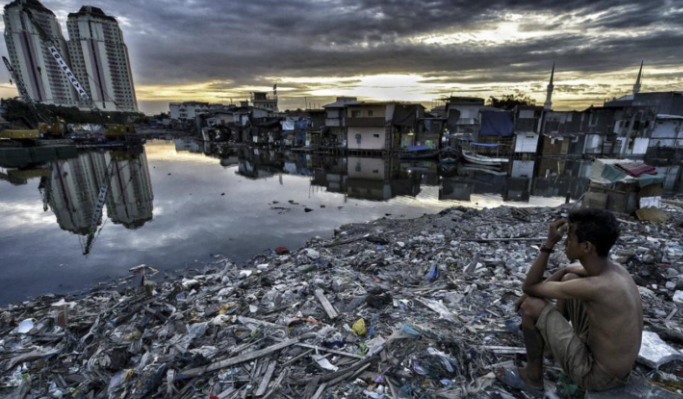From Land to Sea: Why Jakarta is Sinking at an Alarming Rate

Why Jakarta is Sinking? Jakarta the capital city of the Republic of Indonesia, is a huge scattered metropolis home to over 10 million people from diverse ethnic groups. It is located northwest of Java Island and has briskly expanded over the years. It is not only an essential political centre but also the nation’s hub for finance and trade. Jakarta dignifies the country’s most important landmarks, ranging from historical buildings to modern skyscrapers, Jakarta Cathedral, National Museum, and Wisma 46 to name a few.
Also Read:- Minthis Hills Golf Course Tours and Activities- Blogs Year
Jakarta, Indonesia’s bustling capital, is grappling with a crisis that threatens its very existence: the city is sinking at an alarming rate. Nestled on the northwest coast of Java, Jakarta’s rapid urbanization and population growth have placed immense strain on its infrastructure and environment. One of the primary culprits is the excessive extraction of groundwater, which has led to land subsidence, causing parts of the city to descend by several centimeters annually.
Coupled with this is the challenge of rising sea levels due to climate change, which exacerbates the flooding risks. The city’s inadequate drainage system and the weight of its sprawling concrete jungle further intensify the problem. As Jakarta confronts this multifaceted challenge, the urgency to implement sustainable solutions becomes paramount. The sinking capital stands as a stark reminder of the delicate balance between urban development and environmental preservation.
However, this capital city, today is facing challenges of flooding and rising sea levels. Jakarta is sinking bit by bit every year. In recent years, the city has faced many urban floods. According to the World Economic Forum, it is one of the world’s fastest-vanishing cities.
Current problem | Why is Jakarta sinking
The city rests on a low alluvial plain with 13 rivers flowing across it. This makes the city prone to intense flooding during the monsoon season. It is reported that 40% of the city is already below sea level thus leaving it vulnerable to rising sea levels. The root of the problem can be dated back to the 1600s when the Dutch landed in Indonesia and built a city dividing the population. This division led to an unequal water piping system which led the citizens to find other means to fulfil their water requirements.
One of the most occupied cities of the world, Jakarta is sinking and vanishing into the ground for decades. As per the reports from Bandung Institute of Technology, over 95% of North Jakarta will be drowned by 2050. The north of Jakarta has already fallen 2.5 metres in the last ten years and is continuing to sink at the rate of 25 centimetres annually in certain areas. This is approximately twice the global average for coastal megacities. The other part of the city is also sinking at a moderate pace. The western part of the city is sinking 25cm, the eastern part 10cm, the central part 2cm and the southern part at 1cm.
Reasons for the problem
There are multiple reasons for the current situation of the city, the geographical location of the city being one of them. The city is in a delta, the water comes from the mountains in the southern part of the city and the tidal waves come from Jakarta Bay in the north.
One of the primary causes behind this sinking is the depletion of groundwater. More than half of the city does not have access to piped water and as a result, illegal extraction of groundwater is undertaken by public and business organisations. An excess in the extraction of groundwater leads to the weakening of the ground above it. As a result, land subsidence takes place, a phenomenon in which rock and silt pile up on one another. An increase in this extraction increases the chances of the land diminishing, compacting, collapsing and finally sinking.
Jakarta witnessed a huge inrush of people in the 1960s and 1970s. However, the infrastructure of the city was unable to cope with this influx. As a result, informal settlements began coming up around the coast, being all-time vulnerable to flooding. The problem of flooding is so severe in villages along the coast, that temporary bridges are built to get around the village. Even though the city receives a good amount of rainfall throughout the year, this water is unsuccessful in recharging the groundwater table. The lands which were previously marshlands are now covered and exploited for construction activities. A large amount of Jakarta’s wetlands has been converted into the concrete jungle. Thus, no matter how much rain the city receives, it isn’t able to solve the problem.
Another crucial factor responsible for these floodings is climate change. The issues of rising water by strong surges, cyclones and waves can be noticed across the globe. Jakarta is frequently flooded because of severe rains.
Government response | Why is Jakarta sinking
In response to the sinking of the city, the authorities have begun investing in the supply of water to avoid the extraction of water from the ground. In addition to this, laws have also been enforced to monitor the illegal extraction of groundwater. The government has stated that every individual should have a licence to enable the authorities to monitor the extraction of groundwater.
Post the severe floods in 2013, the city authorities started the renovation of the city’s rivers, reservoirs and flood canals, removing the wastes and debris to unclog the system.
To protect the city from a storm of sea water, the National Capital Integrated Coastal Development Programme has been devised. This programme primarily focuses on the construction of the seawall. This seawall called the Great Garuda is a 32km outer seawall constructed across Jakarta Bay along the 17 artificial islands.
The city is also working with C40, a network of cities from all over the world, dedicated to taking action against climate change. Other steps like transitioning to greener modes of transport like electric buses, and promoting the use of public transport are also being taken to reduce carbon emissions. The Indonesian government also plans to relocate the capital city to the island of Borneo, 1300 km away. The citizens of Jakarta will be residing in the city itself, thus emphasising on the need of taking environmental responsibilities solemnly.







